
Epilobium is a genus of flowering plants in the family Onagraceae, containing about 197 species. The genus has a worldwide distribution. It is most prevalent in the subarctic, temperate and subantarctic regions, whereas in the subtropics and tropics Epilobium species are restricted to the cool montane biomes, such as the New Guinea Highlands.

Tetrorchidium is a genus of flowering plants in the family Euphorbiaceae first described in 1841. It is native to tropical portions of Africa and the Western Hemisphere.

Dissanthelium is a genus of plants in the grass family. It is native to the Americas, especially in the Andes of South America.

Chamelaucium, also known as waxflower, is a genus of shrubs endemic to south western Western Australia. They belong to the myrtle family Myrtaceae and have flowers similar to those of the tea-trees (Leptospermum). The most well-known species is the Geraldton Wax, Chamelaucium uncinatum, which is cultivated widely for its large attractive flowers.
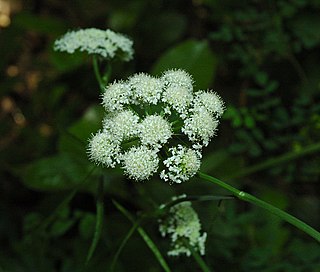
Bunium is a genus of flowering plants in the family Apiaceae, with 45 to 50 species.
Tetrorchidium brevifolium is a species of plant in the family Euphorbiaceae. It is found in Guatemala and Honduras.
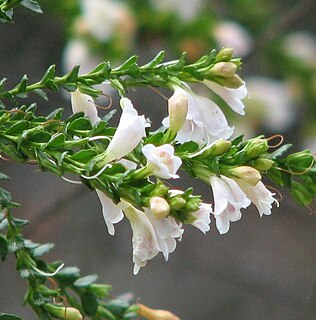
Eremophila brevifolia, also known as spotted eremophila, is a flowering plant in the figwort family, Scrophulariaceae and is endemic to the south-west of Western Australia. It is an erect, open, spindly shrub with sticky, short, serrated leaves and white to pink flowers and is only known from a few scattered populations.
Coelachyrum is a genus of Asian and African plants in the grass family.

Balsamocarpon brevifolium, or algarrobilla, is a species of flowering plants in the legume family, Fabaceae. It belongs to the subfamily Caesalpinioideae and is found in Chile.
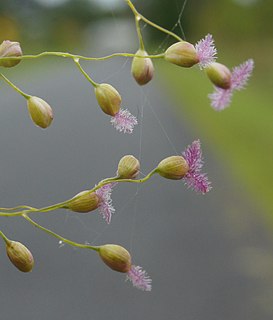
Isachne is a widespread genus of tropical and subtropical plants in the grass family, found in Asia, Africa, Australia, the Americas, and various oceanic islands. They may be known generally as bloodgrasses.
Polytela cliens is a species of moth of the family Noctuidae. It is found through North Africa and the Sahara to Israel, Jordan, the Arabian Peninsula and to southern Iran.
Algarrobilla, small carob in Spanish, also written algarovilla, may refer to :
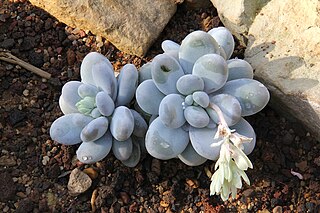
Pachyphytum is a small genus of succulents in the family Crassulaceae, native to Mexico, at elevations from 600 to 1,500 metres. The name comes from the ancient Greek pachys (=thick) and phyton (=plant) because of the shape of the leaves.
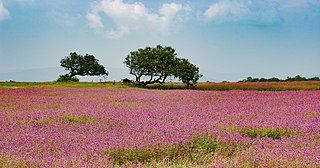
The Kas Plateau Reserved Forest, also known as the Kaas Pathar, is a plateau situated 25 kilometres west from Satara city in Maharashtra, India. It falls under the Sahyadri Sub Cluster of the Western Ghats, and it became a part of a UNESCO World Natural Heritage Site in 2012.

Dipcadi is a genus of bulbous flowering plants in the family Asparagaceae, subfamily Scilloideae. It is widely distributed, occurring in southern Europe, most of Africa and the Middle East through to the Indian subcontinent.
Ripogonum brevifolium, commonly known as small–leaved supplejack, is a vine, or sometimes a shrub, native to Australia.
Cirsium brevifolium is a North American species of plants in the thistle tribe within the sunflower family. Common name is Palouse thistle. The species is native to the northwestern United States, in the States of Washington, Oregon, and Idaho. The plant is particularly common in the Palouse Prairie near Pullman, Washington.
Helenium brevifolium is a North American perennial plant in the Sunflower Family, commonly known as Shortleaf sneezeweed. It is native to the southeastern United States, from Virginia to eastern Louisiana and inland as far as Tennessee.
Phebalium brevifolium is a species of small shrub that is endemic to Western Australia. It has warty branchlets, sessile, wedge-shaped leaves and up to three white flowers arranged in umbels.










